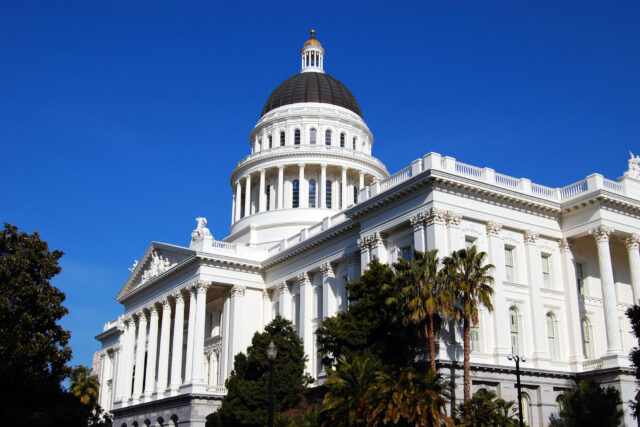Mark Baldassare, PPIC president and CEO, and director of the PPIC Statewide Survey, was invited to speak at a joint informational hearing of the Senate Committee on Elections and Constitutional Amendments and Assembly Committee on Elections on February 1, 2022. This post is excerpted from his prepared remarks.
There have been 55 attempts to recall California’s governor in the 111-year history of the state’s direct democracy system, according to the California Secretary of State. Two attempts qualified for a vote and one resulted in a change of leadership. In October 2003, Governor Gray Davis was removed from office and replaced by Arnold Schwarzenegger. In September 2021, Governor Gavin Newsom remained in office, with a 62% no vote to recall him. While these outcomes were very different, PPIC surveys found similarly strong support in both 2003 and 2021 for process changes to recall elections.
California likely voters have mixed feelings about the recall. This past November, 79% of likely voters said that the recent recall was a “waste of money,” and 78% said the process needed changes. Still, 86% said that it is a “good thing” that the California Constitution provides a way to recall state elected officials such as the governor.
Our latest survey—conducted from January 16–25, 2022—provides an early reading on support for possible recall reforms on the 2022 ballot. This survey has been informed by comments and suggestions from policy makers and policy experts—but the survey methods, questions, and content are determined solely by PPIC’s survey team.
First, the overall effect of September’s recall has a partisan cast. Today, 39% of California likely voters say that it made them feel worse about California politics and elections while 18% say that it made them feel better (41% say it made no difference). More Republicans (54%) and independents (41%) than Democrats (30%) say that it made them feel worse.
We also found that views of potential reforms are divided. We asked about two key proposals that have surfaced in recent hearings and discussions about reforming recall elections:
The signature requirement. One version of this reform would change the signature requirement from 12% to 20% of the total votes cast in the previous election for that office. For context, in the September recall election 1.5 million signatures were required to qualify. With the higher standard, it would have been 2.5 million. Today, 50% of likely voters would support making this change. Partisan groups are deeply divided on their support for this proposal (69% Democrats, 22% Republicans, 39% independents).
Another version of this reform would change the requirement to 10% of all registered voters in California—this would have meant 2.1 million required signatures for the September recall. Currently, 43% support this change. Partisan groups are divided, and support falls short of a majority across parties (49% Democrats, 37% Republicans, 45% independents). Today, about half or fewer across regions and demographic groups support this reform.
The replacement process. Currently, if a majority votes “yes” on part one of the recall ballot, the governor is removed from office and the candidate who receives the most votes on part two of the ballot assumes the governor’s office. Half of likely voters support changes to the replacement process.
Should the lieutenant governor take over for the remainder of the four-year term? Fifty percent support this change, but partisan groups are divided (67% Democrats, 28% Republicans, 40% independents). A similar 50% support appointing the lieutenant governor to governor and having a special ballot measure to replace the governor in the next statewide election. Again, partisan groups are divided (66% Democrats, 34% Republicans, 43% independents). About half or more across most regions and demographic groups are in favor of these proposed changes to the replacement process.
How interested are likely voters in implementing changes to the recall? When told that a joint legislative committee is holding hearings and will make recommendations that would require voter approval, 60% say they think it is a good idea to have state propositions about the recall process on the ballot this year. Majorities of likely voters across regions and demographic groups think it is a good idea, and majorities of Democrats (72%) and independents (55%)—and 47% of Republicans—do as well.
The governor’s recall process illustrates a broader dilemma for a direct democracy system that asks voters to weigh in on initiatives, referenda, and recalls. As noted in our book on the 2003 recall, California voters and their elected officials have all participated in the evolution of a governance system that is still less than perfect. Will they make the reforms necessary for a more effective system or will they allow it to sputter—and perhaps even fail? The answer may ultimately depend on how much its participants are willing to adapt and change. This year, the legislature and voters have an opportunity to take action. Or, following the script after the 2003 recall, they can ignore the warning signs and risk political crisis in the future.
PPIC is committed to informing discussions about recall reforms, exploring support for proposals that surface this year, and following recall reforms that make it onto the 2022 election ballot. Governor’s recalls are rare, and state propositions to change the California Constitution are complex, but the effective functioning of direct democracy is a serious matter for all Californians.





